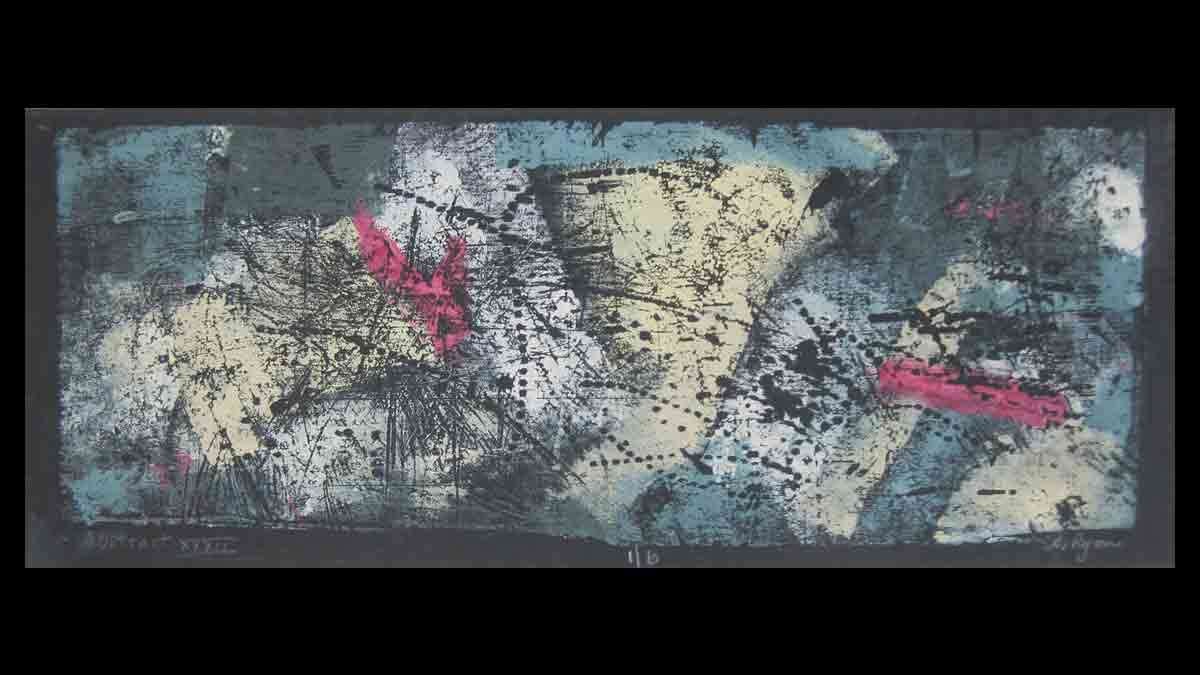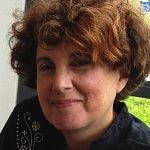Exhibit shows some of the advances in printmaking made under Atelier 17
Several decades before the birth of the feminist art movement, a group of women artists forged paths toward personal and abstract imagery through the medium of printmaking.
“Their abilities to carve out progressive artistic identities and professional reputations as avant-garde printmakers was unprecedented given the male-dominated art world and conservative, midcentury gender norms,” says Christina Weyl, co-founder and co-president of the Association of Print Scholars, an organization that brings together the print community to facilitate dialogue and encourage print scholarship. Weyl has curated Innovation and Abstraction: Women Artists and Atelier 17, on view at the Zimmerli Art Museum in New Brunswick, New Jersey, through May 31, 2017.
The exhibition examines the formal innovations and burgeoning feminist consciousness of eight artists who worked in Atelier 17’s New York location: Louise Bourgeois (1911-2010), Minna Citron (1896-1991), Worden Day (1912-1986), Dorothy Dehner (1901-1994), Sue Fuller (1914-2006), Alice Trumbull Mason (1904-1971), Louise Nevelson (1899-1988) and Anne Ryan (1889-1954). In addition to prints, the exhibition includes examples of works in other media for which the artists are better known: sculpture by Bourgeois, Day, Dehner and Nevelson; paintings by Citron and Mason; a collage by Ryan; and a string composition by Fuller.
Atelier 17 was a legendary printmaking studio that relocated from Paris to New York at the outbreak of World War II, providing a workspace and support for some 200 artists–nearly half of whom were women–to escape political conflicts in Europe. Experimental, often unorthodox, prints by the featured artists are displayed alongside their paintings and sculptures to explore how this work catalyzed their creativity and inspired these women to reshape American abstraction.
Founded in 1927 in Paris by British artist Stanley William Hayter, Atelier 17 included expatriate Surrealist and abstract artists. For the next 15 years, the workshop led a revival of fine-art graphics, encouraging unorthodox techniques and experimentation. Many of the foremost modern artists, from European refugees during World War II to Americans like de Kooning, Kline, Motherwell and Pollock, made prints there. There were more than 90 women in the group.
“The collaborative environment, where artists shared discoveries and worked together, created fertile conditions for the exchange of avant-garde ideas and the development of
formal breakthroughs,” writes Weyl in the exhibition catalog. “Across its three successive locations in Greenwich Village, Atelier 17 became a laboratory that facilitated women artists’ exposure to and eventual practice of modernist styles, including abstraction, surrealism and expressionism.
“Making prints at Atelier 17 served as a conduit through which these female artists realized extraordinary professional achievements and impacted the direction of printmaking, postwar sculpture, fiber art, junk art and Neodadaism,” continues Weyl.
“For many artists, affiliation with Atelier 17 also catalyzed a strong feminist consciousness decades before the women’s art movement of the 1970s.”
These women were on the cutting edge of 20th-century artists’ quest to reassert fiber and textiles as fine art materials. They impressed lace, string and woven fibers into their plates with expressive and modernist intentions. In 1943, Sue Fuller, for example, expanded the technique of soft ground etching—a technique in which the metal plate is treated to remain sticky so that handprints, botanical materials, or fabric leaves an impression. “She firmly believed that textile designs for her soft ground etchings were far from meaningless feminine patterns, as period reviewers would write, but instead the notable introduction of collage into printmaking,” says Weyl. Fuller, in fact, argued the earliest incidence of modernist collage was not the work of Pablo Picasso or Georges Braque, but the innovative early soft ground etchings ofMary Cassatt for which she impressed “nubbly materials” and other scraps of fabric over a metal plate. “Fuller recognized Cassatt’s pioneering collage aesthetic more than 25 years before Miriam Schapiro and Melissa Meyer would coin the term ‘femmage.’”
In Cacophony (1944), Fuller impressed pieces of cut-up Victorian lace, which she had inherited from her mother, around the print’s edges, and teased the threads from a recycled garlic bag to shape the two female figures, as seen in a preparatory collage. Although these abstract “string compositions” were usually categorized as decorative or feminine because of their materials, they captured Fuller’s beliefs about the tensions and structures of modern architecture and engineering. With them, Fuller became an early pioneer of what, in the 1960s, became known as fiber art.
Growing up in Pittsburgh (she graduated from Carnegie Institute of Technology in 1936), Fuller’s earliest childhood memories were of her mother knitting, crocheting and sewing on a sun porch with windows of leaded glass. These combined the elements of thread and glass that would become her life’s work. She said that the abundant threads available to her from her mother’s work “were so wonderful I couldn’t let them go to waste.” She was also influenced by her father, an engineer who made model bridges of string. Fuller studied lacemaking and glass making in Italy and England and calligraphy in Japan. Her string compositions are networks of complexly arranged threads, embedded in panels or blocks. Made from a plastic monofilament, the geometric abstractions are like snowflakes preserved for all time.
“Atelier 17 was one of the most progressive printmaking workshops of the 20th century,” says Zimmerli Assistant Curator of Prints and Drawings Nicole Simpson. “Faced with societal pressures and juggling the responsibilities of marriage and motherhood, these women found kinship and formed friendships at the workshop as they together sought
professional recognition in the male-dominated art field. The spirit of experimentation and collaboration they found at Atelier 17 encouraged them to take similar bold and imaginative approaches to other art forms… and demonstrate their formal inventiveness and creativity and tell the story of how Atelier 17 had a lasting impact on their careers.”
There will be an opening celebration of Innovation and Abstraction: Women Artists and Atelier 17 on Tuesday, February 7, 5-9 p.m., with talks by Innovation and Abstraction guest curator Christina Weyl at 5:45 p.m.
______________________________________
The Artful Blogger is written by Ilene Dube and offers a look inside the art world of the greater Princeton area. Ilene Dube is an award-winning arts writer and editor, as well as an artist, curator and activist for the arts.
WHYY is your source for fact-based, in-depth journalism and information. As a nonprofit organization, we rely on financial support from readers like you. Please give today.







